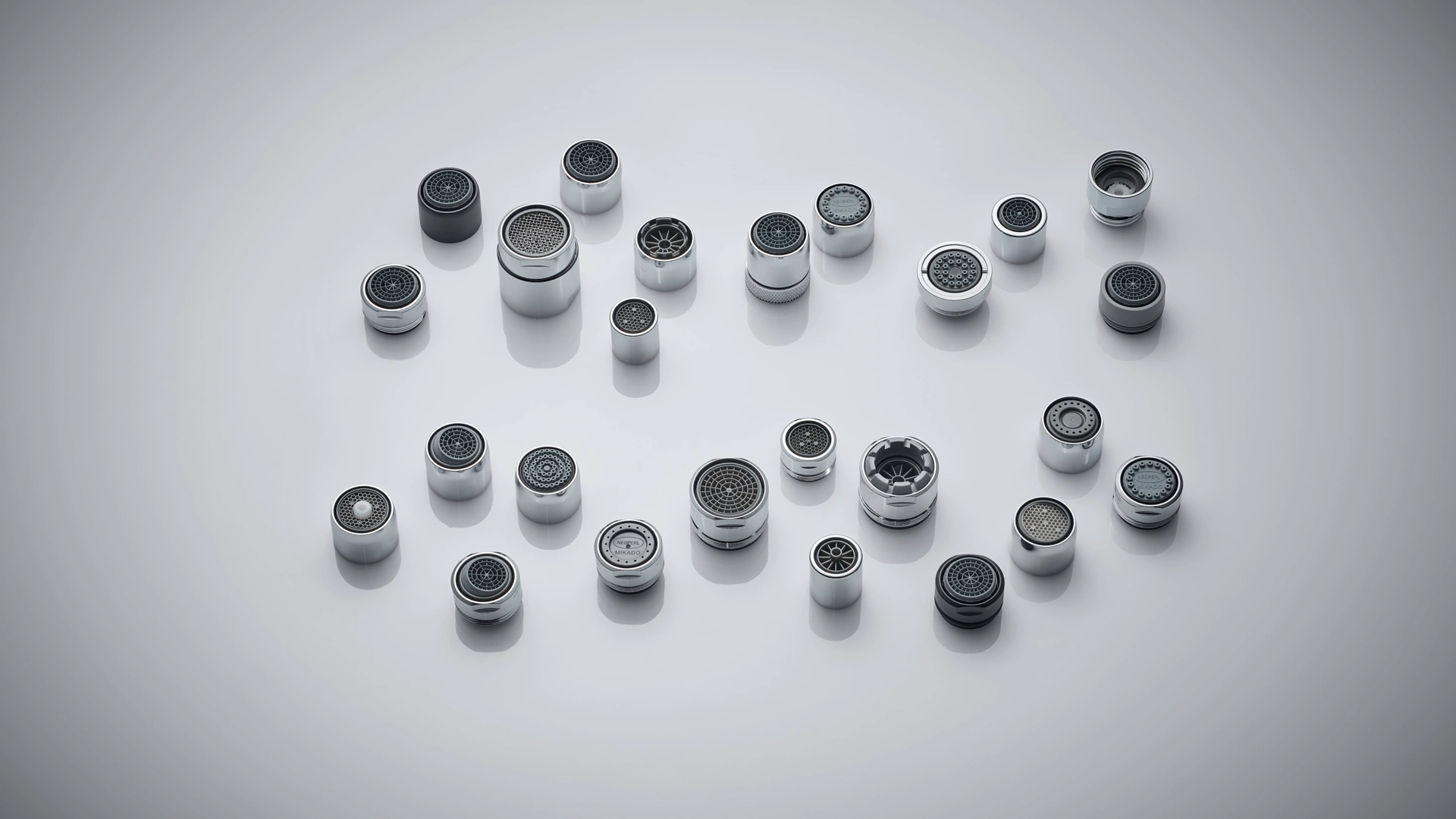An aerator, also known as a bubbler, mixing nozzle or stream straightener, is a small component that is attached to the end of a faucet. Its main task is to regulate the water stream, for example by mixing in air. This ensures that the stream is soft and even and reduces splashing.

Aerator, bubbler, mixing nozzle – what now?
Scroll to explore
Today we want to dedicate ourselves to an inconspicuous but incredibly important component that can be found in every household – the aerator. What exactly is an aerator, what functions does it perform and why is it so important? And why does it have so many different names?
3 min
Also popularly known as...
The term "perlator" is sometimes incorrectly used when referring to the aerator. Correct: PERLATOR is a registered trademark of Neoperl for a faucet aerator. Therefore, every PERLATOR is a faucet aerator, but not every faucet aerator is a PERLATOR.
Aerators are known by many other names. Admittedly, this can sometimes lead to confusion. We have come across these names before:
- Bubbler
- Conservator
- Mixing nozzle
- Restrictor
- Regulator
- Stream straightener
- Tap end
- Or simply "the Neoperl"